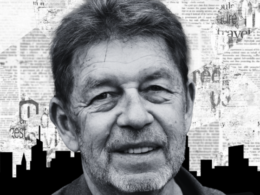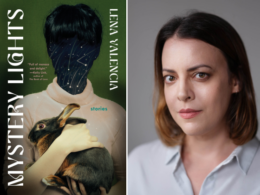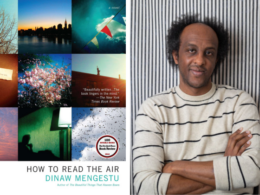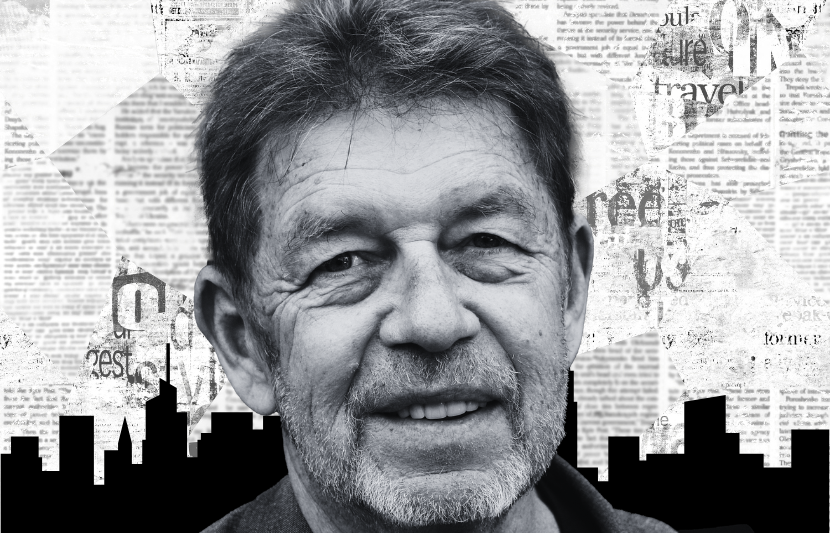
Pete Hamill (David Shankbone / CC BY-SA 3.0)
A peerless journalist, acclaimed memoirist, and Library of America editor and contributor, Pete Hamill would have turned ninety this year. In this heartfelt tribute, writer Raj Tawney (who previously shared an appreciation of beloved actor and food writer Madhur Jaffrey) recalls how this iconic New York columnist influenced him, first in the newspapers found around his childhood home, then in nonfiction highlights like A Drinking Life and Why Sinatra Matters, and finally in the turbulent early months of the Covid-19 pandemic.
By Raj Tawney
During my teenage years, I had a difficult time reading most of the books we were assigned in high school English. Nothing against Salinger, Wilde, or Hemingway—I’d learn to appreciate their work much later. But at the time, I couldn’t relate to them the way I did to newspaper reporters and columnists: writers found on disposable pages in the New York Post, New York Daily News, Newsday, Long Island Press, The Village Voice, and the local edition of The New York Times. It was these publications that spoke to and about the working and middle classes who bought their dailies, those immigrants and first-generation Americans like my family and me.
I can still smell the scent of fresh, off-white newsprint that rested between my father’s hands each morning, mixed with the smell of black mud coffee, toilet odor, and pungent cologne. The paper traveled with my dad to each room in the house while he got ready for work, folding sections as he paced from the closet to the bathroom to the kitchen. Whenever I found an opportunity, I’d swipe the paper and scan the comics. Eventually, I graduated to columns.
As I grew older and read more of Hamill’s personal writings, I realized he wasn’t much different than I. He didn’t even graduate from high school, yet he wrote beautifully.
I admired Pete Hamill the most. Even today, in what would have been his ninetieth year, I still look to his thought-provoking writing for guidance. He was different from a straitlaced beat reporter or a smug columnist with an axe to grind. He viewed the world differently than other journalists, able to colorize people, places, and cultures during otherwise bleak news cycles in the second half of the twentieth century. He found the beauty in the muck.

Pete Hamill and Jimmy Breslin (HBO)
Hamill wrote more like a novelist (which he was) or a street poet; the weathered gruffness in his tone and his oratorical ability were apparent to anyone who saw his appearances in various Ric and Ken Burns documentaries, including New York and Prohibition, or if you were lucky enough to see him speak live over the years. He spoke profoundly about the human condition through the eyes of others, particularly of artists—from the liner notes of Bob Dylan’s Blood on the Tracks, for which he won a Grammy Award, to the brief but essential exposition Why Sinatra Matters, to a spirited biography of Mexican painter Diego Rivera. His affection for these men makes sense when you consider Hamill’s initial desire to be an artist himself, having studied in Mexico City on the G.I. Bill before finding his way to a job at the New York Post in 1960.
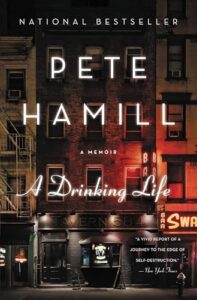
A Drinking Life by Pete Hamill (Back Bay Books, 1995)
When I first saw him speak, he was appearing on a C-SPAN program to discuss his memoir A Drinking Life, about his Irish immigrant family’s journey and his relationship with alcoholism. He had his last drink in 1972 at age thirty-seven. Although I was only a boy when watching him, I was drawn to his calm candor and subtle confidence. He was manly yet in touch with his feelings, which I’d rarely seen in males around me. I wouldn’t read A Drinking Life until I became an adult and I’m glad I waited. I needed time to explore my own identity, immigrant roots, and family history before I could truly understand his story. I’m thirty-seven myself now, and I too have given serious thought to my own vices.
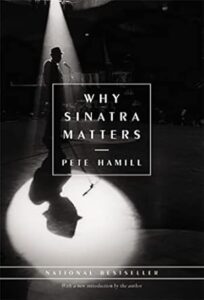
Why Sinatra Matters by Pete Hamill (Little, Brown, 1998)
When my mom bought me a used copy of Why Sinatra Matters, published shortly after Sinatra died in 1998, it felt like a long version of one of Hamill’s columns: a compassionate cultural analysis of a complex man who’d been analyzed to death. And yet, Hamill offered a new angle. Rather than approaching the singer’s tirades, dalliances, and victories, he traces Sinatra’s life and career back generations to Italy, and to the brutal tribulations faced by Italian Americans. He then delves into Sinatra’s unbelievable life and career, and where it all began—in New York, hustling himself around Tin Pan Alley, causing hysteria at the Paramount Theatre, and, in later years, spending late nights in bars with writers, including Hamill. Through Sinatra, Hamill detailed the plights of many immigrant families, including my own, which I found solace in.
I wanted to be a journalist since I was five years old. I told my kindergarten teacher as much. But I was always too self-conscious about my own capability, too shy to share my poetry or personal essays with anyone. I wasn’t a good student and barely graduated from community college, though I always pursued my creative passions, struggling to make my way as a musician through my teens and twenties but ultimately failing.
As I grew older and read more of Hamill’s personal writings, I realized he wasn’t much different than I. He didn’t even graduate from high school, yet he wrote beautifully. I began to see myself in Hamill and finally found the courage to send an essay I’d written into Newsday. They published it and I haven’t stopped writing since.
In March 2020, I was working at a communications job I despised, for a disparaging boss who’d tell others I wrote at a high school level. I’d often think about Hamill’s journey, forcing myself to write each night after returning from a long train commute. As the spread of Covid-19 intensified, and my wife Michelle was sent home, I was still expected to come into work until mid-March while my higher-ups determined the staff’s fate. Finally, they let us leave. I remember that day, sitting backward on the Long Island Railroad train car, staring out of the window at the sun setting behind the New York skyline. In hand was a copy of A Drinking Life, which I was finally working my way through, but I couldn’t bring myself to read it that day. Something in my gut told me I wouldn’t be going back into Manhattan for a long time.
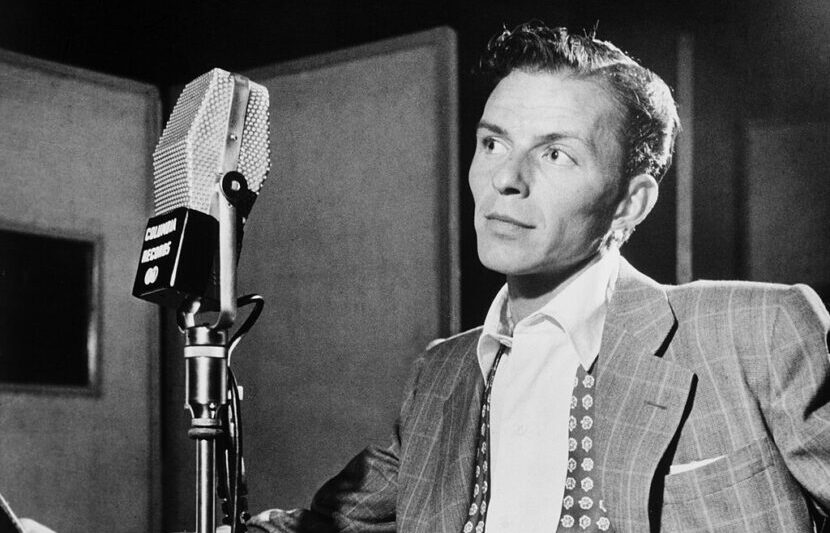
Frank Sinatra in 1947 (William Gottlieb / Public Domain)
Within a week of the lockdown, Michelle was let go from her job. A few months later, I too was out on my ass. A mortgage and other bills needed to be paid, so I took a low-level office job, scanning papers and delivering documents for minimum wage. I was thankful to have the job. At night, I’d come home and write. It was my only personal outlet. I began working on what would become my debut memoir. I daydreamed that I may even send it to Hamill, and maybe he’d even blurb it. But those dreams dissipated quickly. Pete Hamill died on August 5, 2020.
Three years later, with my memoir set to be published soon, I was asked to return to the city. As I boarded the LIRR and took my seat, I turned on my Spotify app and pulled up Sinatra, just like I used to on my daily commute. As Sinatra started to sing, I stared out of the train car window. It all felt so familiar. But this time, I began to sob uncontrollably. I felt overwhelmed by the moment. I thought about my dad and his newspapers, about Hamill and Sinatra, and about New York and what it’s all meant to me since boyhood.
I still think about Hamill and his romantic visions of everyday New Yorkers, of readers and immigrants, of artists and aristocrats, of drunks and dilettantes, and of anyone else who dares to strive for more in this unforgiving, magnificent city. I’ll never forget him.

Raj Tawney (photo courtesy of the author)
Raj Tawney is the author of Colorful Palate: A Flavorful Journey Through a Mixed American Experience and the middle-grade novel All Mixed Up. He’s written about identity, family, food, and culture from his multiracial American perspective for The New York Times, the Washington Post, USA Today, and many other outlets.
